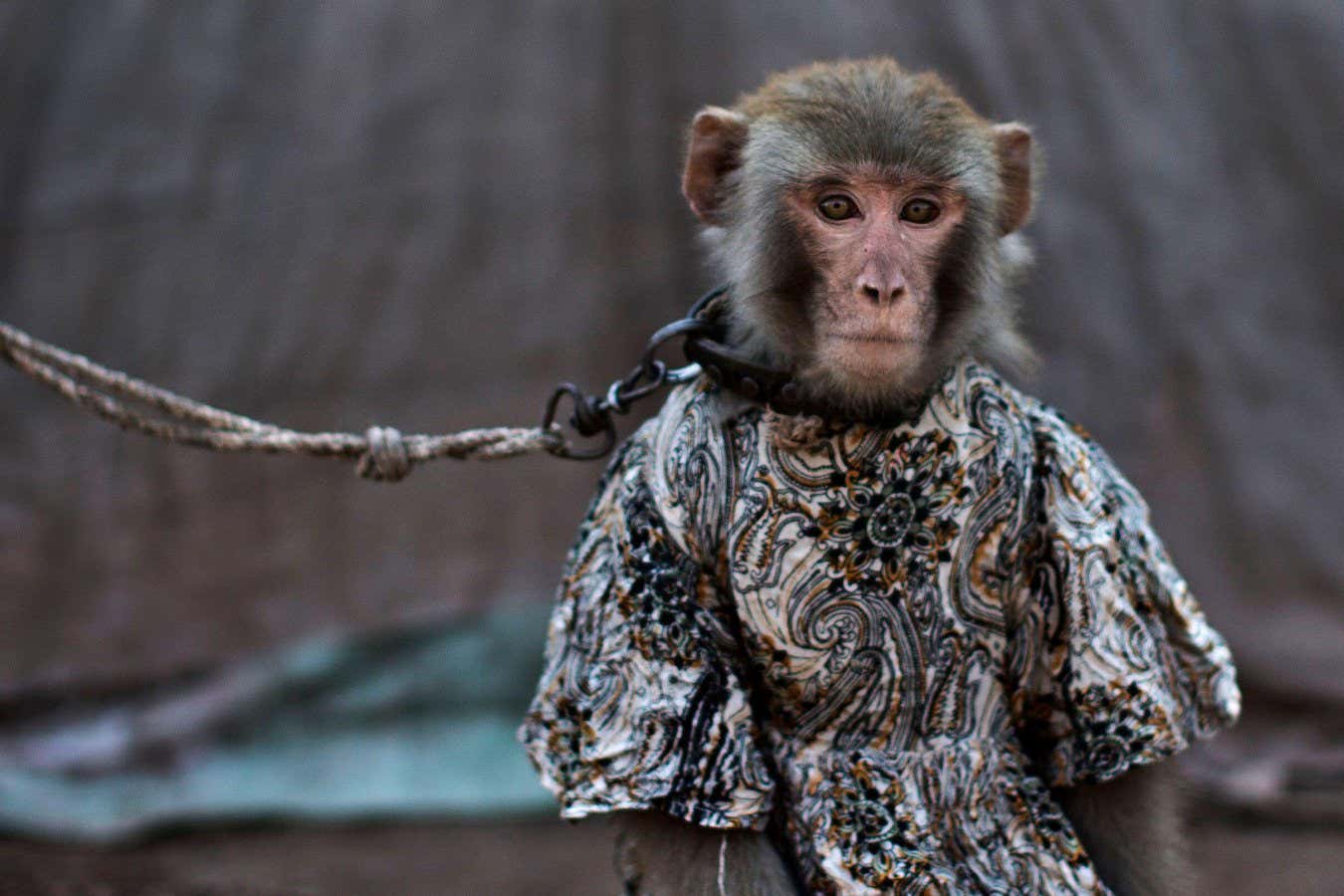Monkeys that perform in street shows in Pakistan experience high levels of stress hormones, abnormal behavior, and poor health. However, ceasing these shows could create a welfare crisis for the trainers and their families, say researchers.
Rhesus macaques, taken from the wild as infants, are trained by traveling trainers throughout South and South-East Asia to perform dance steps, tricks, and acrobatics. Despite the performances being perceived as “cute” and “funny” by some audiences, hair analyses have shown that the animals live with constant and dangerous levels of stress.
According to Mishaal Akbar at the University of Glasgow, UK, the findings highlight the harsh reality of a trade that keeps both the monkeys and their low-income trainers in challenging circumstances.
Akbar, having grown up in Pakistan, wanted to shed light on the plight of these “highly social and intelligent” dancing monkeys. She collaborated with Neil Evans, also at the University of Glasgow, to analyze the animals’ long-term stress hormone levels through their hair samples.
The researchers found that cortisol, a stress hormone, was 55 per cent higher in performing monkeys compared to sanctuary monkeys. Meanwhile, the average testosterone concentrations in the male performing monkeys were 55 per cent lower, indicating the acceptance of their trainers as dominant. These monkeys also exhibited signs of fear and aggression during performances, poor body condition, abnormal behaviors, and significantly shorter lifespans.
Trainers, who are usually groomed as children to join their trade group, understand the difficult lives their monkeys lead. However, they continue in the trade due to professional and cultural obligations, and the income generated from these shows.
While researchers hope these findings can put pressure on authorities to improve the treatment of these animals, Akbar suggests offering sustainable alternatives to dancing monkey trainers, similar to the approach that helped end the dancing bear trade in India.
Unique Insights
The research sheds light on the challenging situation faced by both the dancing monkeys and their trainers. It also emphasizes the need for sustainable alternatives to support the welfare of both humans and animals involved in these shows.








